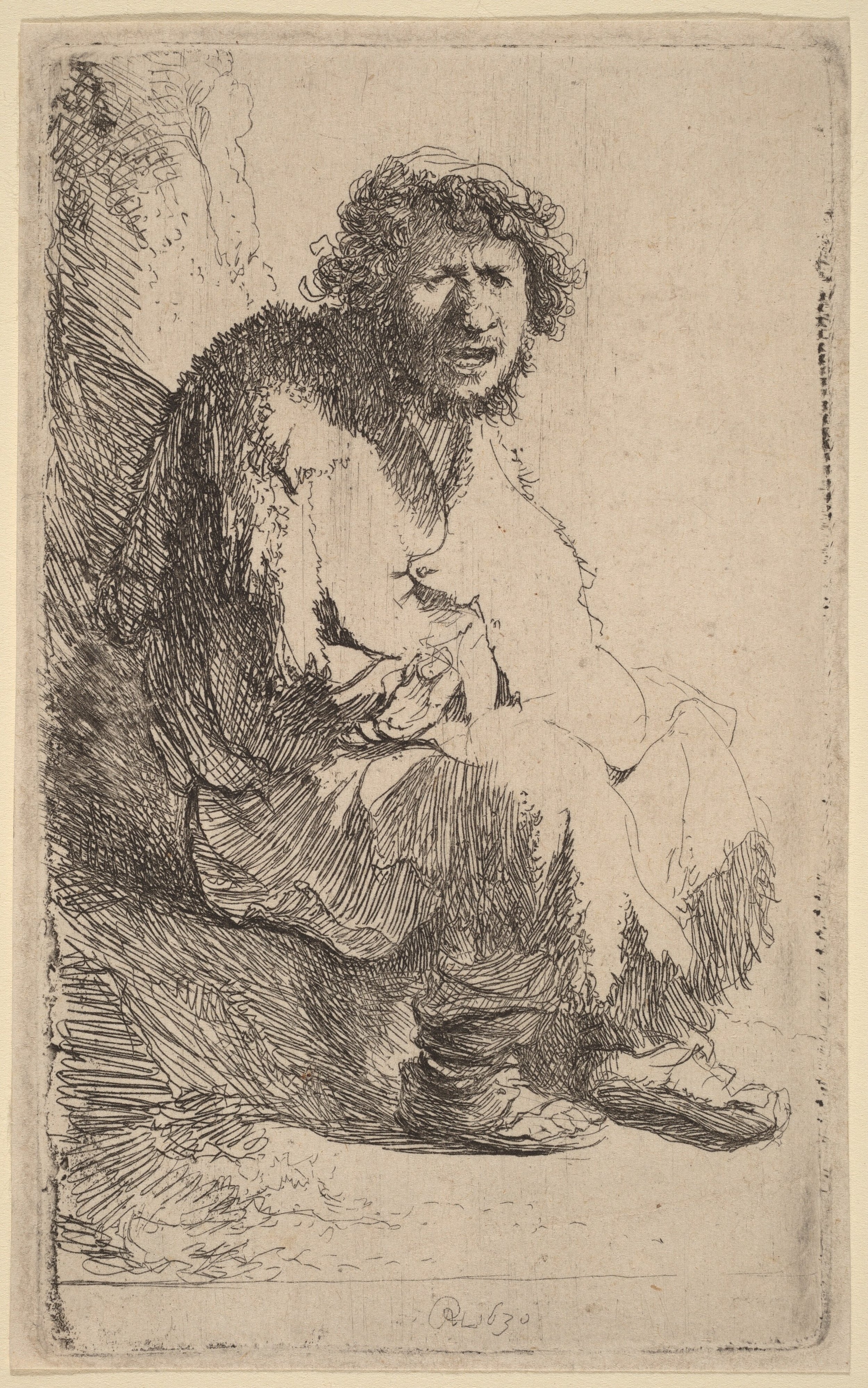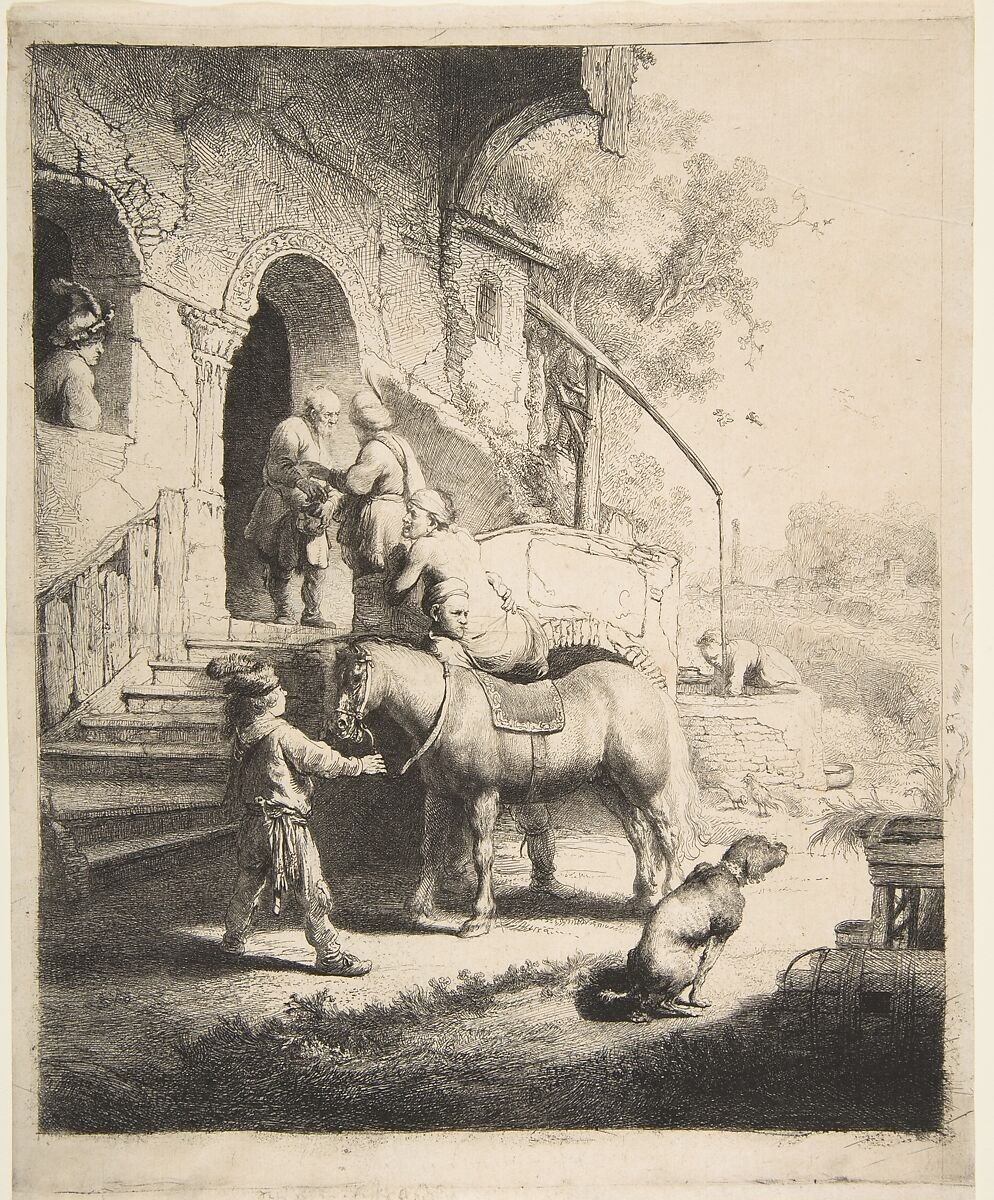Rembrandt’s Good Samaritan, Then and Now
by Adele Ne Jame
Beggar Seated on a Bank. Rembrandt (Rembrandt van Rijn). 1630. Etching. 4 3/4 x 2 15/16 in. Courtesy of the National Gallery of Art.
The Good Samaritan. Rembrandt (Rembrandt van Rijn). 1633. Etching, engraving and drypoint. 10 9/16 × 8 7/16 in. Courtesy of The Met.
Of all his self-portraits, perhaps
we most love Beggar Seated on a Bank,
hunched in rags, scruffy hair,
broad nose, the mad glint in the eye.
Some say he is groaning in misery,
a palm extended out to us, who knows
whether for alms or recognition.
Though the artist thought himself ugly—
and preferred it to the beautiful,
his love of nature gave us beauty
despite his dead birds
or dogs doing what dogs do
as in the Good Samaritan.
There we see all—
a man who stops to help a stranger,
a ransacked traveler, beaten
by robbers and left for dead.
Others, so the story goes, including
a priest, saw but turned a blind eye
hurrying off to the other side of the street—
so that we catch our breath in shame.
But the Samaritan rushes to
douse his open wounds
then sets him on his own animal
and leads them to an inn.
When the Samaritan pays the innkeeper
and promises to return,
the artist melds the earthly (the dog
in the foreground) and the spiritual.
Some say the artist saw the parables
as an account of moments in his own life,
this master who harnessed the forces of
light and dark, who plunged
so deeply into the mysterious
that Van Gogh thought him
a magician. This man who suffered
the loss of three children and his Saskia,
who wiped his dirty brushes on his clothes
not caring a whit what others might think
was happy in the company of
workers and street people.
All his life a spendthrift,
finally, he died poor and
was buried in an unmarked grave—
Still we have the gift of his heart-work,
like deep music that moves
through rivers
opening and opening –-
and the marvel of this etching
revealing the faces of all those outside
the inn, but not so the Samaritan.
His back is turned to us thus becoming
the embodiment of the injunction:
Do not let your left hand know
what your right hand is doing.
Though he remains anonymous,
his radiance burns white hot.
Adele Ne Jame is Lebanese American and has lived in Hawai'i most of her life. She has published three books of poems and won many awards including a National Endowment for the Arts in Poetry, a Pablo Neruda poetry prize and an Eliot Cades Award for Literature. She has taught creative writing at the university level for decades also serving as the Poet-in-Residence at the University of Wisconsin-Madison, and her poems as broadsides have been exhibited both at the Sharjah UAE International Biennial and at the Arab American National Museum.



